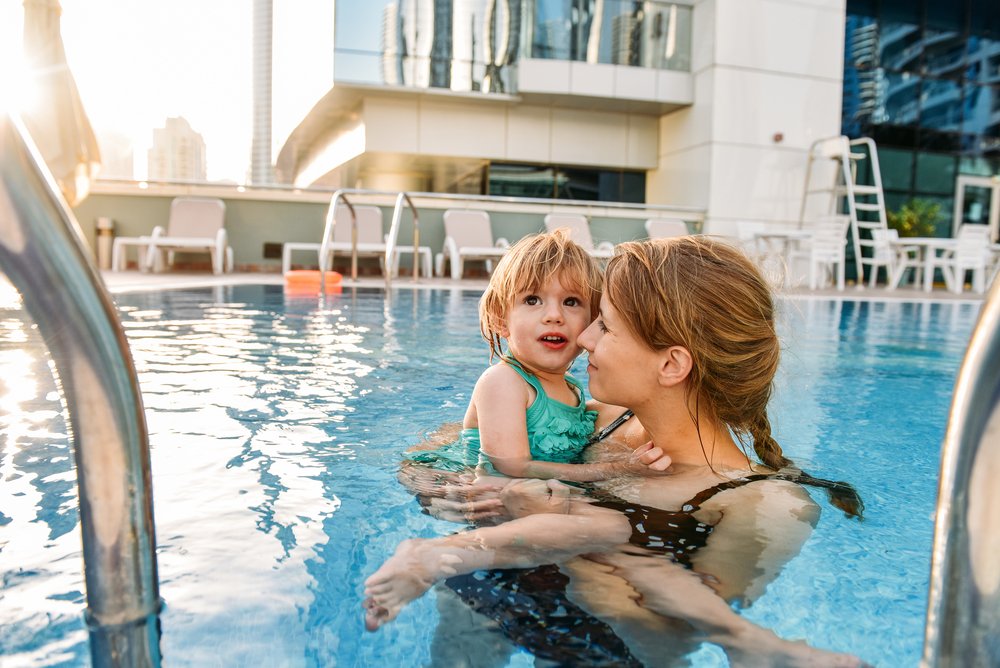Key points:
- Active adult supervision is essential for children’s pool safety, with attention and quick reaction being crucial even if a lifeguard is present.
- Installing pool barriers and setting ground rules are key measures to prevent accidents and enhance pool safety.
- Sunscreen application and diligent toy removal after playtime are important steps to ensure children’s safety in and around the pool.
- The American Academy of Pediatrics suggests swimming lessons for children depending on their readiness, exposure to water, emotional maturity, and physical development, but emphasizes continued supervision even after lessons.
When summer arrives, it comes with warm, sunny days that are ideally spent splashing around in a pool. Thinking about going for a swim with your little one? Here are some pool safety guidelines you can follow to make sure that it’s a smooth experience for everyone.
Pool safety for children
The best way to keep children safe around swimming pools is by having an adult who knows how to swim actively supervising them at all times. Even if a life guardian is supervising, try to keep an eye on your children. Also, try not to get distracted too much, so in case of an emergency, you can react quickly and help them. For infants and toddlers, an adult should be within arm’s reach in the water with them.
If you have a pool at home, it is recommended to install a fence or barrier that surrounds the pool area, preventing children from entering the area on their own. You can also install an alarm from the house to the pool area to know if your little one wants to go out. It’s also a good idea to establish some ground rules. The American Academy of Pediatrics (AAP) recommends the following:
- When people are not using the pool, keep toys away from it.
- Blow-up pools should be emptied after each use.
- No riding toys near the pool (bicycles, tricycles, etc).
- Keep electrical appliances away from the pool area.
- No diving in shallow water.
- No running on the pool deck.
- No pushing others to the pool or on the pool deck.
Also, if you have toys in your pool, such as balls or floats, remember to take them out once your children finish playing, to prevent them from trying to reach them without your supervision. And for those times you go to the pool, remember to protect your children with sunscreen.
Finally, to reinforce pool safety, the AAP recommends swimming lessons for kids that are over four years old or children from 1-4 years old that are ready to learn. Children will be ready to learn at different stages in their individual development. Consider the frequency of exposure to water, emotional maturity, and physical development to decide if your little one should begin swimming lessons. Keep in mind that even after lessons, young children should always be supervised in or around a pool.








